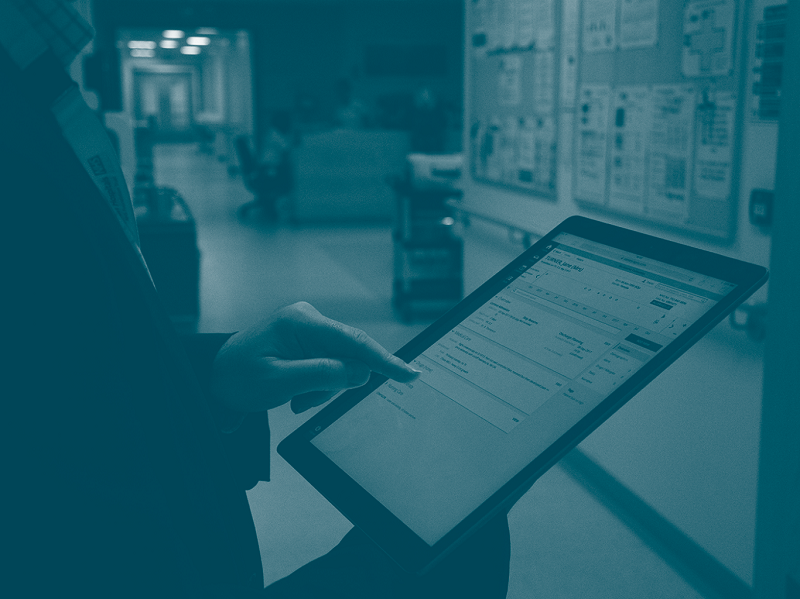In his Autumn Budget speech, Jeremy Hunt, Chancellor of The Exchequer, said: “We must ask challenging questions about how to reform all our public services for the better.”
 But what does this mean in practice for an NHS stretched to the limit?
But what does this mean in practice for an NHS stretched to the limit?
There is a pressing need to increase efficiency, but with staff levels at a historic low, how advisable is wholesale change?
Frontline staff have no time to learn complex new systems and trusts lack the IT resources required to successfully deliver an all- encompassing EPR system without significant disruption.
And, with recent budget reductions, trusts need to do more with less – that means leveraging proven technologies that can be quickly deployed alongside existing, trusted solutions to deliver fast, incremental efficiency gains.
It also means integrating solutions to provide clinicians with fast access to accurate patient data and addressing the bottlenecks in current processes – most notably administration and patient communication.
In addition, it means replacing manual processes that are costly, time-consuming, and open to error with effective clinical workflows driven by information captured effectively at the point of care.
The frustrations endured day to day by those working in the NHS are well documented.
Patient demands continue to rise, while staff shortages continue to place enormous pressures on existing resources.
For hard-pressed clinicians managing frontline pressures and working hard to reduce the backlog in care, this lack of administrative resource is creating additional stress within a system already stretched to breaking point
At the end of 2022, there were 124,000 vacancies in secondary care in England.
And, while the number of medical vacancies is a serious concern – 8,728 vacancies or 5.9% of all medical posts were vacant – the issue within administrative and support staff is equally urgent.
The lack of administrative staff is exacerbating delays and results in patients waiting weeks for referral letters and test results.
It also creates additional pressure on hospital switchboards managing calls from anxious patients. And it inevitably contributes to trusts failing to hit targets, including cancer treatment timelines.
A system at breaking point
For hard-pressed clinicians managing frontline pressures and working hard to reduce the backlog in care, which has seen waiting lists rise to seven million, this lack of administrative resource is creating additional stress within a system already stretched to breaking point.
It is vital to enable clinicians to capture patient information and initiate a workflow as soon as possible.
Whether that is updating the patient record, sending a letter, or requesting a test, the provision of fast, efficient, secure, and accurate administrative support for frontline clinicians is transformative.
As a King’s Fund report says: “High-quality administration has the potential to improve patient experience, reduce inequalities, promote better care – and contribute to a better working environment for staff.”
Seamless adoption
By prioritising information capture and workflow, a trust can radically reduce delays in patient communication and improve clinicians’ time to care.
Advances in next-generation speech recognition and mobile technology are enablers to transform clinical productivity, improving the throughput of patients and improving the patient experience.
With recent budget reductions, trusts need to do more with less – that means leveraging proven technologies that can be quickly deployed alongside existing, trusted solutions to deliver fast, incremental efficiency gains
Speech recognition technology is increasingly mature – not only are standard speech engines becoming ever more accurate, but the process is further enhanced through the use of custom language models and machine learning in areas such as oncology, which boost accuracy to over 95%.
With the inherent usability of a mobile app, the entire process is easy to adopt and simple to use and clinicians can update information on the go – whether at the patient bedside, during an outpatient appointment, or travelling between wards.
A clinician can also record information directly into the patient record and letters can be created, tests requested, and actions outlined.
For the medical secretarial staff, the back-office processes are radically streamlined: when it takes just 30 seconds to double check the automatically created letter, as opposed to three minutes to create one from traditional dictation, throughput is transformed.
Effective workflows
The benefits of taking this approach to achieving integration and interoperability touch clinicians, administrative staff, and patients.
Indeed, at Taunton and Somerset NHS Foundation Trust, the use of speech recognition and clinical correspondence alone saved over £1m in a year.
The immediate benefit was the 44% reduction in letter turnaround time and a 96% reduction in the clinical letter transcription backlog, with immediate knock-on effects on the patent experience.
In addition, medical secretary efficiency increased, while other clinical staff spent far less time searching for information.
This model also supports the goals of the Transfer of Care initiative, which aims to improve patient care through systems interoperability across different care settings.
A key focus is digital sharing of structured discharge and clinic attendance documents sent from secondary care to primary care.
Evolution based on leveraging proven technology to drive efficiency and integration with other systems is vital if the NHS is to continue to be at the heart of healthcare in the UK
By using speech recognition to rapidly capture all of the information that populates the discharge summary, including the information for the doctor linked to follow up appointments, the entire process can be streamlined – information can be created once and used many times, avoiding duplication and errors and increasing speed of communication across many stakeholders, including primary, community, and mental health care.
The lack of administrative staff is exacerbating delays and results in patients waiting weeks for referral letters and test results
Under pressure
The pressure is on to maximise existing resources following the recent cut to the NHS England technology budget to less than £1billion.
This reduction makes it more important than ever for NHS England to consolidate guidance and standards and recognise the power of smaller projects to deliver tangible value, fast.
Big, multi-million-pound projects are not only unaffordable, they are disruptive.
There is enough challenge in the pressure cooker of a hospital today without the upheaval of systems and processes.
The revolutionary approach to health technology has its benefits in some cases, but the country and the NHS is in a very-challenging position.
Rising demand, paired with a shortage of both staff and funds, makes it essential to balance costs against the need to be efficient.
And evolution based on leveraging proven technology to drive efficiency and integration with other systems is vital if the NHS is to continue to be at the heart of healthcare in the UK.
